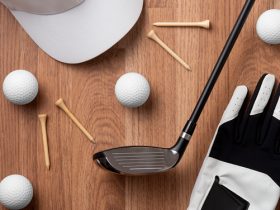Creating an indoor climbing room—whether it’s a personal setup at home or a full-scale training facility—requires more than just a few climbing holds on the wall. Proper gear is essential not only for performance but also for safety, durability, and versatility. Whether you’re building a space for kids, beginners, or seasoned climbers, having the right equipment can make all the difference.
Here’s a comprehensive guide to the essential gear needed for a functional and safe indoor climbing environment.
1. Climbing Wall Panels
Before any gear comes into play, you need a sturdy wall surface. Most climbing rooms use:
- Plywood panels: Typically ¾ inch thick birch or marine-grade plywood
- Textured panels: Coated with sand and epoxy for added grip
- Modular wall systems: Ideal for ease of installation and reconfiguration
These form the base for attaching holds and volumes. Panels should be securely mounted to studs or a support frame, with a grid of pre-drilled holes and T-nuts to allow versatile route setting.
2. Climbing Holds
Holds are the “handholds” and “footholds” that climbers use to ascend the wall. They come in different shapes, sizes, and textures:
- Crimps: Small edges for fingertips
- Jugs: Deep, easy-to-grip holds
- Slopers: Rounded holds requiring palm friction
- Pinches and pockets: Advanced grip shapes for variety
You’ll want a range of holds to suit different skill levels. For a small home wall, 50–100 holds offer a good start, while larger installations might use several hundred.
3. Volumes and Features
Volumes are large, three-dimensional shapes attached to walls to create variety and simulate real rock features. They can dramatically alter the angle and difficulty of routes.
Useful for:
- Enhancing beginner routes
- Creating complex movements for advanced climbers
- Adding depth and diversity to the climbing experience
4. T-Nuts and Bolts
These are essential for attaching holds to the wall. T-nuts are embedded in the back of each panel, allowing holds to be screwed in securely from the front with bolts.
Make sure you have:
- Steel T-nuts (zinc-coated for rust resistance)
- Matching bolts (usually Allen-head or cap screws)
- A long-handled Allen wrench for installation and route setting
5. Safety Mats or Padding
Safety is critical in any climbing space. Even low-height bouldering setups should include thick padding to prevent injuries from falls.
Types of mats:
- Crash pads (portable foam pads, 4–6 inches thick)
- Wall-to-wall gym flooring (made from high-density foam or layered mats)
- Padded flooring systems (custom-fitted for larger climbing gyms)
Thickness and coverage depend on wall height and user skill level.
6. Lighting and Ventilation
Proper lighting improves visibility and helps climbers assess routes clearly. Install bright, glare-free lights across the climbing wall. LED strip lights or overhead fixtures work well.
Ventilation is also important. Climbing can be a high-sweat activity, so fans or small air purifiers help maintain air quality and reduce chalk dust.
7. Chalk and Chalk Bags
Climbers use chalk to keep their hands dry and improve grip. You’ll need:
- Loose chalk or chalk balls
- Personal chalk bags for each climber
- Chalk buckets for communal use
Consider using liquid chalk to reduce airborne particles in enclosed areas.
8. Training Accessories
To complement climbing, many home and commercial setups include training gear like:
- Hangboards for grip strength
- Campus boards for dynamic movement training
- Fingerboards and rings for upper-body conditioning
These tools help climbers develop targeted muscle groups and finger strength outside of climbing sessions.
9. Route Setting Tools
As your climbing space evolves, you’ll want to reset routes. Keep tools on hand such as:
- A cordless drill
- Allen keys and wrenches
- Hold brushes and route tape
Organized route setting encourages progression and keeps the experience fresh for users.
Conclusion
Building an indoor climbing room requires a mix of foundational materials, safety features, and functional accessories. Whether you’re creating a personal training wall or equipping a salle d’escalade Vertical Bloc, investing in quality gear ensures a safe, engaging, and long-lasting climbing environment. By focusing on both performance and protection, you create a space that supports every climber—from beginner to elite.








